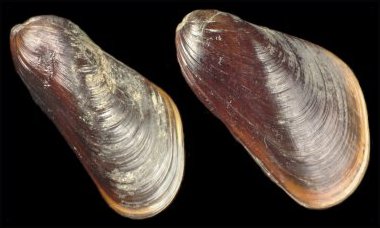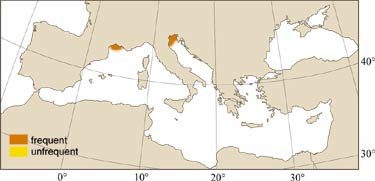
|
Relevant Synonyms
Misidentification
|
|
| photo: S. Gofas / Coll. G. Spada |
|
SHORT
DESCRIPTION
color :
shell brown, dark brown in older specimens; pale yellow zigzag lines in younger specimens. Internally the shell is usually purple above and white below the umbonal keel.
common size :
20-30 mm length. Height/length ratio=0.59, width/length=0.35, max. observed length 47 mm (Russo, 2001). |
DISTINGUISHING CHARACTERISTICS
BIOLOGY / ECOLOGY
habitat :
in upper reaches of estuaries where salinity is low for a considerable part of the year. In association with Mytilus galloprovincialis, attached with a byssus on hard substrata or oyster shells in numerous colonies. Specimens are found attached on algae, in masses of timber, stones or dead shells. |
|
1st
Mediterranean record
|

|
|
DISTRIBUTION
|
ESTABLISHMENT SUCCESS
speculated reasons for success :
|
|
|
MODE OF
INTRODUCTION |
IMPORTANCE TO
HUMANS |
|
KEY
REFERENCES
|
|
|
 Modiola securis Lamarck, 1819
Modiola securis Lamarck, 1819